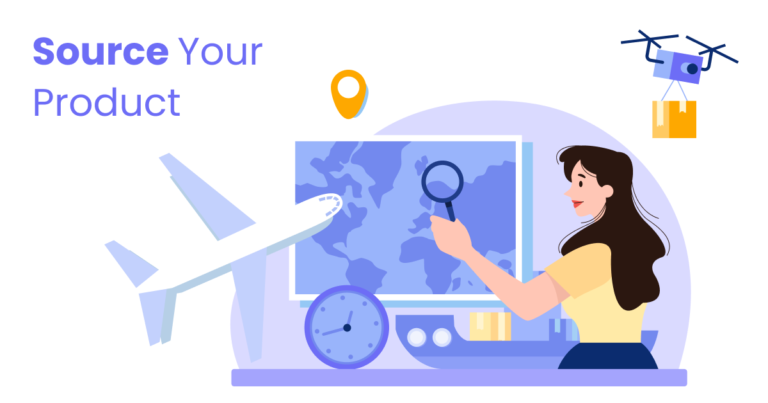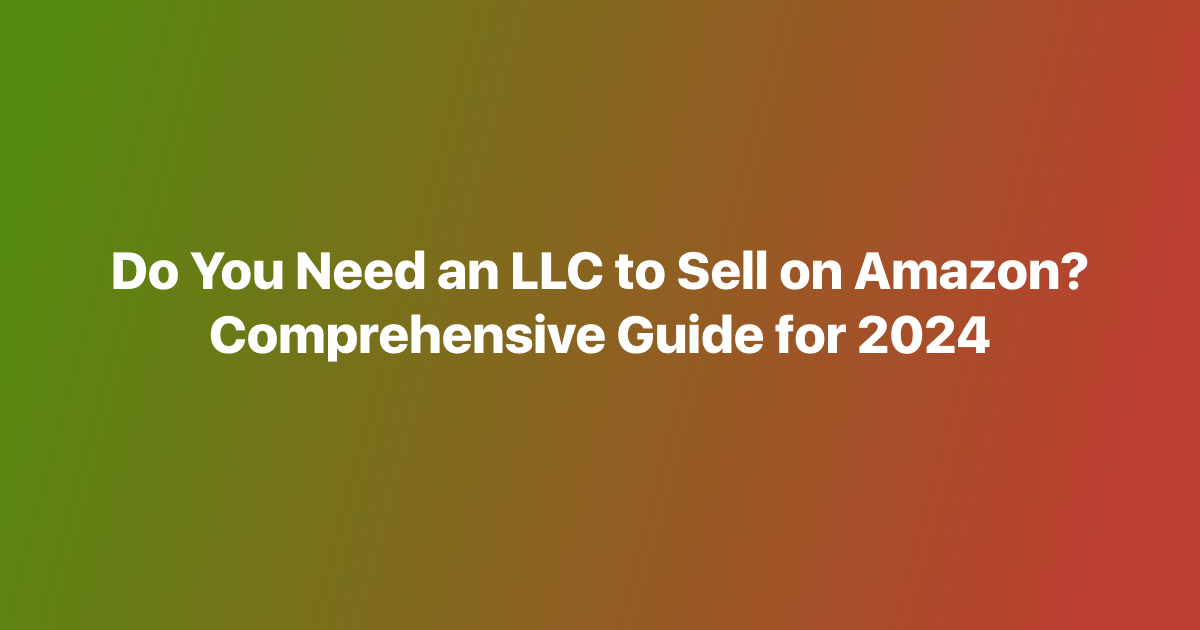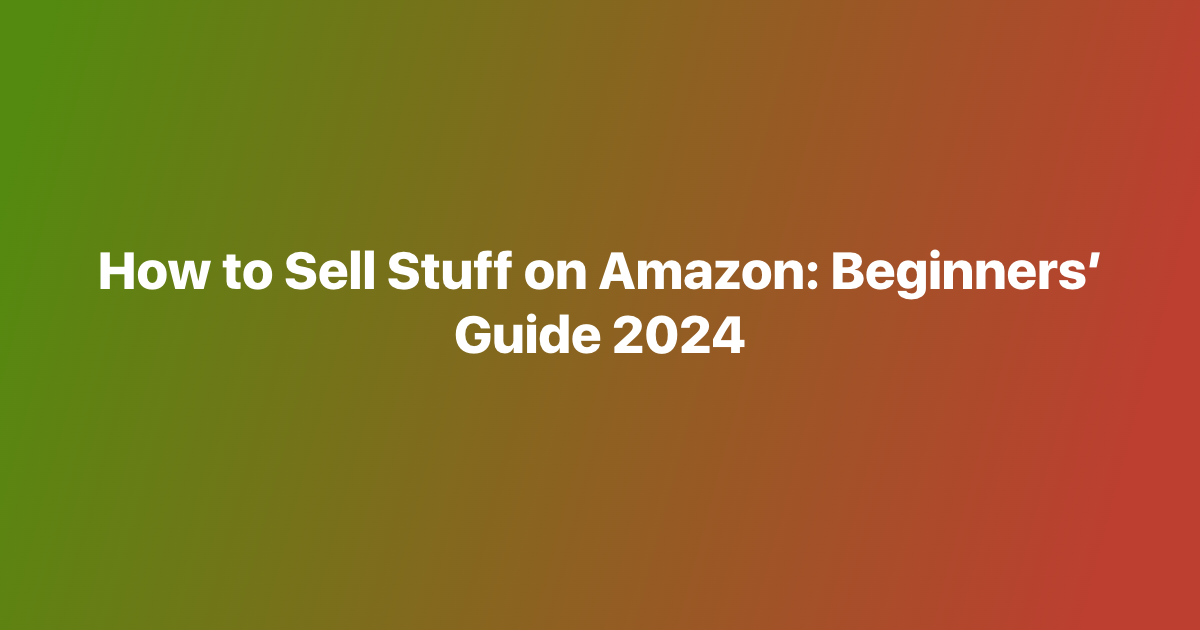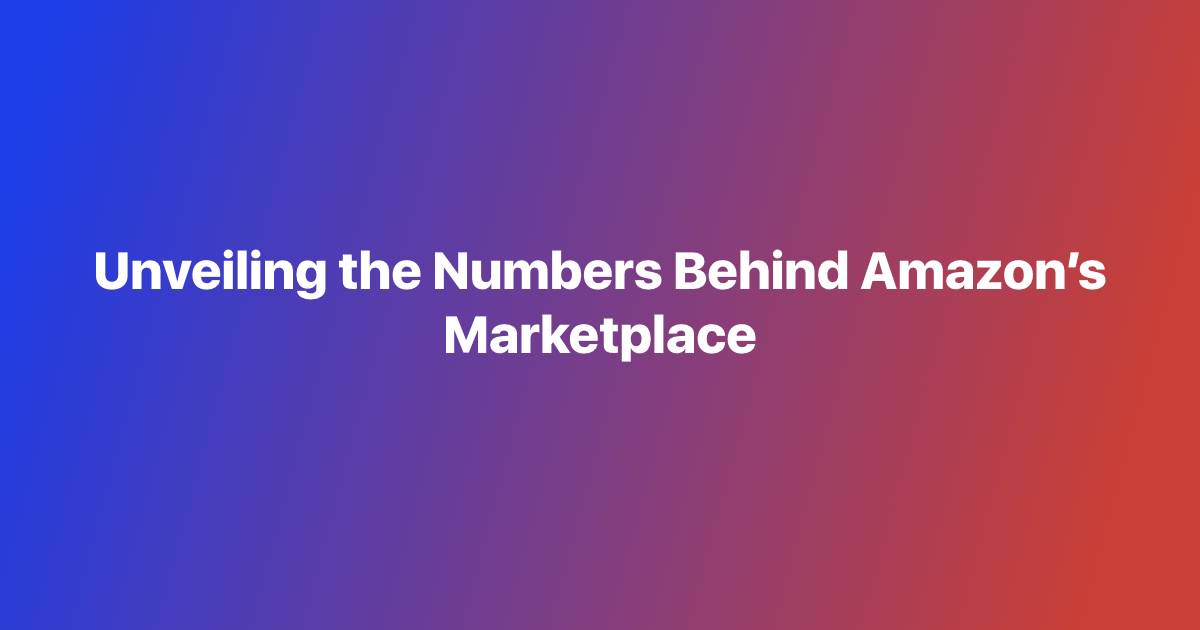Amazon FBA for Beginners: Your Complete Step-by-Step Guide to Success
Amazon FBA (Fulfillment by Amazon) is a service provided by Amazon that allows sellers to store their products in Amazon’s fulfillment centers. Amazon takes care of storage, packaging, shipping, as well as customer service and returns. This program simplifies the logistics of selling products online and enables sellers to focus on other aspects of their business. Understanding Amazon FBA is crucial for new sellers who want to leverage Amazon’s vast infrastructure and customer base to grow their business. What is FBA Amazon? It’s a game-changer for e-commerce, offering a seamless way to manage orders and improve customer satisfaction. For those wondering how to start Amazon FBA, this guide will provide a comprehensive overview.
Benefits of Using Amazon FBA for New Sellers
For beginners, Amazon FBA offers several advantages:
- Simplified Logistics: Amazon handles storage, packaging, shipping, and returns, making it easier for you to manage your business.
- Prime Eligibility: Products fulfilled by Amazon are eligible for Amazon Prime, which can increase your sales due to faster shipping and higher visibility.
- Customer Service: Amazon provides 24/7 customer service on your behalf, improving the buying experience for your customers.
- Scalability: As your business grows, Amazon FBA can scale with you, providing the infrastructure to handle large volumes of orders.
- Increased Trust: Customers trust Amazon’s reliable fulfillment network, which can lead to higher conversion rates and repeat business.
Step 1: Create a Seller Account
Steps to Create an Amazon Seller Account
Starting your journey with Amazon FBA begins with creating a seller account. Here’s how to start selling on Amazon FBA for beginners and how to start Amazon FBA step by step:
- Visit Amazon Seller Central: Go to the Amazon Seller Central website and click on “Sign up” to create a new account.
- Provide Information: You will need to provide your business information, including your name, address, and contact details. You’ll also need a valid credit card and bank account information for deposits.
- Verification: Amazon will verify your identity through a phone call or text message. Be prepared to provide any necessary documents to confirm your identity.
- Complete Registration: Follow the prompts to complete the registration process. Once your account is set up, you can start listing products, a critical step in starting an Amazon FBA business.
Choosing Between Individual and Professional Seller Accounts
When creating your seller account, you have the option to choose between an individual or a professional account:
- Individual Seller Account: Best for those just starting out or planning to sell fewer than 40 items per month. There are no monthly subscription fees, but you will pay a $0.99 fee per item sold, plus additional selling fees.
- Professional Seller Account: Ideal for sellers who plan to sell more than 40 items per month. This account has a monthly subscription fee of $39.99, but there are no per-item fees. Additionally, professional sellers have access to more advanced selling tools and features, such as bulk listing and inventory management.
Choosing the right account type depends on your sales volume and business goals. For those serious about building an Amazon FBA business, a professional account is often the better choice due to the added features and cost savings on per-item fees. Understanding how to become an Amazon FBA seller and making informed decisions is crucial for success.
With your seller account set up, you’re ready to move on to the next step: identifying a profitable product to sell on Amazon. Stay tuned for tips and strategies on how to start Amazon FBA successfully and how to get started with Amazon FBA.
Step 2: Identify a Product
Tips for Finding a Profitable Product
Finding a profitable product is a crucial step in starting an Amazon FBA business. Here are some tips to help you identify a profitable product and ensure your success in how to start Amazon FBA:
- Research Market Demand: Look for products with high demand but low competition. Use Amazon’s Best Sellers and Movers & Shakers lists to identify trending products. This is essential in understanding Amazon FBA.
- Consider Profit Margins: Calculate potential profit margins by comparing the product cost, Amazon fees, and selling price. Aim for products with a margin of at least 30% to ensure profitability in your Amazon FBA business.
- Check Customer Reviews: Analyze customer reviews to understand what buyers like and dislike about existing products. This can help you identify opportunities for improvement and differentiation, crucial for how to sell on Amazon FBA for beginners.
- Avoid Restricted Categories: Stay away from categories that require approval or have selling restrictions, especially as a beginner. This makes starting an Amazon FBA business smoother and less complicated.
- Think About Size and Weight: Smaller, lighter products generally have lower shipping and storage costs, making them more profitable and easier to manage in your Amazon FBA business.
Using Tools Like Helium 10’s Black Box to Locate Low-Competition Products
To streamline the process of finding profitable products, use tools like Helium 10’s Black Box. This tool helps you locate low-competition products that have high demand, making it easier to start an Amazon FBA business. Here’s how to use it:
- Set Your Criteria: Input your desired criteria such as price range, estimated sales, review count, and competition level. This approach is fundamental in how to start Amazon FBA step by step.
- Analyze Results: Black Box will provide a list of products that meet your criteria. Analyze these results to identify potential products to sell, essential for starting an Amazon FBA business.
- Validate Demand: Use other Helium 10 tools like Xray and Trendster to validate the demand and seasonal trends for the selected products.
- Check Competitors: Evaluate the competition for each product to ensure it is not overly saturated. This step is key in how to start Amazon FBA for beginners.
By using Helium 10’s Black Box, you can efficiently find products that fit your business model and start Amazon FBA with confidence.
Step 3: Source Your Product

Finding Reliable Suppliers (e.g., Alibaba, AliExpress)
Once you’ve identified a profitable product, the next step is to find reliable suppliers. Here’s how to find reliable suppliers on platforms like Alibaba and AliExpress, crucial for how to start an Amazon FBA business:
- Search for Suppliers: Use Alibaba or AliExpress to search for suppliers that offer the product you want to sell. Look for suppliers with high ratings and good reviews.
- Verify Suppliers: Check for supplier certifications, such as Verified Supplier status on Alibaba, to ensure they are reputable. This step is essential in how to start selling on Amazon FBA.
- Request Samples: Order samples from multiple suppliers to compare product quality. This is crucial in ensuring you are selling high-quality products, a key part of how to start Amazon FBA.
- Check MOQs: Confirm the minimum order quantity (MOQ) and ensure it aligns with your budget and inventory needs. This step is vital in how to start an Amazon FBA business.
- Negotiate Prices: Don’t be afraid to negotiate prices and terms with suppliers to get the best deal, a fundamental aspect of how to start Amazon FBA.
Ensuring Product Quality and Negotiating Prices
Ensuring product quality is essential for maintaining customer satisfaction and positive reviews. Here’s how to ensure product quality and negotiate prices:
- Conduct Inspections: Hire a third-party inspection service to check the quality of your products before they are shipped. This is crucial in how to sell on Amazon FBA for beginners.
- Request Detailed Specifications: Clearly communicate your product specifications and quality standards to the supplier, essential in how to start Amazon FBA.
- Negotiate Favorable Terms: Negotiate not only on price but also on payment terms, lead times, and shipping methods to optimize your costs. This is vital in how to start Amazon FBA step by step.
- Build Strong Relationships: Establish a good relationship with your suppliers to ensure better cooperation and quality control over time, a key aspect of how to start an Amazon FBA business.
By finding reliable suppliers and ensuring product quality, you can successfully start selling on Amazon FBA and build a reputable brand.
Step 4: Ship Products to Amazon Warehouses
Creating a Shipping Plan in Amazon Seller Central
To start selling on Amazon FBA, you need to ship your products to Amazon’s fulfillment centers. Here’s how to create a shipping plan in Amazon Seller Central:
- Log In to Seller Central: Access your Amazon Seller Central account and go to the “Inventory” tab. This step is fundamental in how to start Amazon FBA.
- Select Products: Choose the products you want to send to Amazon and click on “Send/Replenish Inventory.”
- Create a Shipping Plan: Follow the prompts to create a shipping plan. This includes entering the shipment’s origin, quantity, and packaging details, a crucial part of how to start Amazon FBA for beginners.
- Label Products: Print and apply the necessary labels to each product according to Amazon’s requirements. Proper labeling is key in how to start an Amazon FBA business.
Packaging and Labeling Requirements
Proper packaging and labeling are critical to ensure your products are received and processed correctly by Amazon. Here are the requirements:
- Packaging: Use sturdy boxes and packing materials to protect your products during transit. Follow Amazon’s packaging guidelines to prevent damage, a key step in how to start Amazon FBA.
- Labeling: Each item must have a unique FNSKU label. Ensure labels are scannable and placed on a flat surface of the product packaging, essential for how to start an Amazon FBA business.
- Shipping Boxes: Label each shipping box with the appropriate shipping labels, ensuring they meet Amazon’s guidelines. This step is crucial in how to start selling on Amazon FBA.
Choosing Shipping Methods (Small Parcel vs. Freight)
Selecting the right shipping method is crucial for managing costs and ensuring timely delivery to Amazon’s fulfillment centers. Here are the options:
- Small Parcel Delivery: Ideal for smaller shipments. Products are packed in individual boxes and shipped via couriers like UPS or FedEx. This method is cost-effective for smaller volumes and essential for how to start Amazon FBA.
- Freight Shipping: Suitable for larger shipments. Products are packed on pallets and shipped via freight carriers. This method can be more economical for large quantities and is a key consideration in how to start an Amazon FBA business.
By carefully planning your shipping and adhering to Amazon’s guidelines, you can ensure a smooth process in starting an Amazon FBA business and successfully start selling on Amazon FBA. Next, we will explore creating and optimizing product listings to maximize your sales and visibility on Amazon.
Step 5: Create and Optimize Product Listings
Importance of High-Quality Images and Detailed Descriptions
Creating compelling product listings is crucial in starting an Amazon FBA business. High-quality images and detailed descriptions can significantly impact your sales and customer satisfaction. Here’s why they are important:
- High-Quality Images: Professional, high-resolution images help showcase your product effectively. They provide customers with a clear view of the product, its features, and benefits. Including multiple images from different angles and lifestyle shots can enhance the customer’s understanding and trust, which is key to how to start Amazon FBA. This is essential for how to sell on Amazon FBA for beginners.
- Detailed Descriptions: A well-written product description that highlights the product’s features, benefits, and uses can persuade potential buyers to make a purchase. Include specifications, dimensions, and any relevant details that can answer common customer questions, which is essential for how to start an Amazon FBA business.
Using Keyword Tools Like Helium 10’s Magnet and Cerebro to Find Relevant Keywords
To increase your product’s visibility, it’s crucial to use relevant keywords in your listings. Helium 10’s Magnet and Cerebro are powerful tools that can help you find these keywords:
- Magnet: This tool helps you find high-volume keywords related to your product. Enter your main keyword, and Magnet will generate a list of related keywords along with their search volumes. This helps in understanding the best keywords to target for your product, essential for starting an Amazon FBA business.
- Cerebro: This reverse ASIN lookup tool allows you to see which keywords your competitors are ranking for. By analyzing successful competitors, you can identify high-performing keywords to include in your listings, making it easier to start selling on Amazon FBA.
Tips for SEO Optimization of Product Listings
SEO optimization is vital for increasing the visibility of your product listings on Amazon. Here are some tips:
- Use Relevant Keywords: Incorporate the keywords you found using Magnet and Cerebro into your product title, bullet points, and description. This helps improve your search ranking on Amazon, a crucial step in how to start FBA Amazon.
- Optimize Your Title: Make sure your title includes the most important keywords, along with key product features. Keep it concise yet descriptive.
- Bullet Points: Use bullet points to highlight the main features and benefits of your product. Include relevant keywords naturally, making it easy for customers to scan and understand the key selling points.
- Backend Keywords: Use the backend search terms field in Seller Central to include additional relevant keywords that might not fit naturally in your product description. This is essential for how to get started on Amazon FBA.
- Customer Reviews: Encourage customers to leave reviews. Positive reviews can improve your product’s ranking and visibility, which is crucial for how to start an Amazon FBA business.
By following these tips, you can create and optimize your product listings effectively, ensuring a strong start to your Amazon FBA business and understanding how to do Amazon FBA successfully. This step by step Amazon FBA approach will guide you through the process of making your product stand out and achieve higher sales, making it ideal for Amazon FBA beginners to follow and succeed. Every detail matters when you consider the crucial Amazon FBA steps for optimization and success.
Step 6: Launch Your Product
Strategies for a Successful Product Launch
Launching your product effectively is essential for gaining initial traction and sales. Here are some strategies for a successful product launch, crucial for those wondering amazon fba how to start:
- Promotional Offers: Offer discounts or promotions to attract initial customers. This can help generate reviews and boost your product’s visibility, a key tactic in starting an Amazon FBA business.
- Email Marketing: Use your email list to announce your product launch and offer special deals to subscribers. This can drive traffic and sales right from the start, a crucial step in how to start Amazon FBA step by step.
- Social Media Marketing: Promote your product launch on social media platforms to reach a broader audience. Use engaging content and targeted ads to attract potential buyers, essential for how to start selling on Amazon FBA.
Utilizing Amazon’s PPC Ads to Increase Visibility
Amazon’s Pay-Per-Click (PPC) advertising is a powerful tool to increase your product’s visibility and drive sales. Here’s how to use it:
- Sponsored Products: Create PPC campaigns for your products. Target relevant keywords to ensure your ads appear in search results and product detail pages. This helps in how to start an Amazon FBA business effectively.
- Automatic and Manual Campaigns: Start with automatic campaigns to gather data on which keywords perform well, then create manual campaigns to target those high-performing keywords more precisely.
- Budget Management: Set a daily budget for your campaigns to control your advertising spend and optimize your ROI, a crucial step in how to start Amazon FBA.
Monitoring and Adjusting Your PPC Campaigns
Regularly monitoring and adjusting your PPC campaigns is crucial for maximizing their effectiveness. Here’s how:
- Analyze Performance: Use Amazon’s advertising reports to track the performance of your campaigns. Look at metrics like click-through rate (CTR), cost-per-click (CPC), and conversion rate to understand how your ads are performing, essential for starting an Amazon FBA business.
- Adjust Bids: Increase bids on high-performing keywords to maximize visibility and reduce bids on low-performing keywords to control costs.
- Optimize Keywords: Continuously add new keywords that show potential and remove underperforming ones to keep your campaigns effective. This is a key part of how to start an Amazon FBA business.
By following these strategies and tips, you can successfully launch your product, increase its visibility, and drive sales, ensuring a successful start to your Amazon FBA business. Understanding how Amazon FBA works and using PPC ads effectively are crucial components of amazon fba for beginners. Next, we will explore how to build and manage reviews, a critical aspect of maintaining a successful presence on Amazon.
Step 7: Build and Manage Reviews

Importance of Customer Reviews for Ranking and Sales
Customer reviews play a critical role in the success of your Amazon FBA business. They directly impact your product’s ranking and influence potential buyers’ purchasing decisions. Here’s why they are important:
- Improved Search Ranking: Amazon’s algorithm favors products with a high number of positive reviews, improving their visibility in search results. This is crucial for how to do Amazon FBA.
- Increased Trust: Positive reviews build trust and credibility with potential customers, increasing the likelihood of a purchase. This is essential for an Amazon FBA beginner.
- Higher Conversion Rates: Products with good reviews tend to have higher conversion rates, leading to increased sales and revenue.
Encouraging Satisfied Customers to Leave Reviews
To build a strong review profile, it’s important to encourage satisfied customers to leave reviews. Here are some strategies:
- Follow-Up Emails: Send a follow-up email after purchase thanking the customer and politely requesting a review. Make it easy for them by providing a direct link to the review page. This strategy is particularly useful for those learning how to start selling on Amazon FBA.
- Insert Cards: Include a small card in the product packaging asking for feedback and reviews. Make sure the message is friendly and encourages honest opinions.
- Excellent Customer Service: Providing outstanding customer service can lead to positive reviews. Respond promptly to customer inquiries and resolve any issues quickly.
- Amazon’s Request a Review Button: Use the “Request a Review” button in Amazon Seller Central to send automated review requests to customers. This is a great tool for how to start Amazon FBA step by step.
Handling Negative Feedback Constructively
Negative reviews can impact your sales and ranking, but handling them constructively can mitigate their effects:
- Respond Promptly: Address negative reviews quickly and professionally. Apologize for any issues and offer solutions to resolve the customer’s concerns.
- Investigate Issues: If a review highlights a recurring issue, investigate and take steps to rectify the problem to prevent future negative feedback.
- Request Removal: If a negative review is unjustified or violates Amazon’s review policies, you can request its removal through Amazon Seller Central.
By building and managing reviews effectively, you can enhance your product’s reputation and boost sales, crucial for starting an Amazon FBA business.
Step 8: Monitor Your Performance
Key Metrics to Track (e.g., Sales, Inventory Levels, Advertising Spend)
Monitoring your performance is vital to ensure the success and growth of your Amazon FBA business. Here are key metrics to track:
- Sales: Track daily, weekly, and monthly sales to understand your revenue trends and identify peak sales periods.
- Inventory Levels: Monitor your inventory levels to prevent stockouts and overstocking. Maintaining optimal inventory levels ensures consistent sales and customer satisfaction.
- Advertising Spend: Keep an eye on your advertising spend to ensure you are getting a good return on investment (ROI). This is crucial for managing your PPC campaigns effectively and understanding how to Amazon FBA.
Tools for Monitoring and Adjusting Strategies (e.g., Helium 10’s Profits and Keyword Tracker)
Utilizing tools can help you monitor performance and make data-driven decisions to optimize your strategies. Here are some useful tools for an Amazon FBA beginner:
- Helium 10’s Profits: This tool helps you track your overall profits and losses, providing insights into your revenue, costs, and profitability. It’s essential for managing your Amazon FBA business effectively.
- Keyword Tracker: Helium 10’s Keyword Tracker allows you to monitor your keyword rankings and adjust your SEO strategy accordingly. By tracking keyword performance, you can optimize your listings to maintain or improve your search ranking.
- Inventory Management Tools: Tools like InventoryLab or RestockPro help you manage your inventory levels, forecast demand, and streamline the restocking process, ensuring you never run out of stock.
By regularly monitoring these metrics and using the right tools, you can continuously improve your strategies and ensure the success of your Amazon FBA business. Understanding how to start Amazon FBA and maintaining a proactive approach to performance monitoring are crucial for long-term success.
Next, we will explore how to scale your business, a critical step in growing your Amazon FBA business beyond the initial stages. This is vital for those looking at how to do Amazon FBA and seeking to transform their startup into a thriving enterprise.
Step 9: Scale Your Business
Expanding Your Product Line
Once you’ve established a successful Amazon FBA business, the next step is to scale by expanding your product line. Diversifying your offerings can help increase your market share and revenue. Here’s how to approach it:
- Market Research: Conduct thorough market research to identify new product opportunities. Use tools like Helium 10’s Black Box to find high-demand, low-competition products that complement your existing line. Understanding what is an Amazon FBA can help you make informed decisions.
- Test New Products: Start with small batches to test the market response before committing to large orders. This approach minimizes risk and allows you to gauge customer interest.
- Customer Feedback: Use customer feedback from your existing products to identify gaps in the market and develop new products that meet customer needs. This is crucial for how to get started on Amazon FBA and expand effectively.
Using FBA Features Like Bundling and Variations
Amazon FBA offers several features that can help you maximize sales and enhance your product offerings, such as bundling and variations:
- Bundling Products: Create product bundles that offer more value to customers. For example, if you sell kitchen gadgets, you could bundle a set of utensils together. Bundling can increase the perceived value and boost sales.
- Variations: Offer variations of your products, such as different colors, sizes, or styles. This allows customers to choose the option that best suits their needs and can lead to higher conversion rates. Learning how to do FBA Amazon effectively involves leveraging these features to enhance your offerings.
- Optimize Listings: Ensure that your bundled and variation listings are well-optimized with high-quality images and detailed descriptions. This step is critical in following an Amazon FBA step by step guide.
Tips for Hiring Additional Help as Your Business Grows
As your Amazon FBA business grows, you may need to hire additional help to manage increased demand and scale effectively. Here are some tips:
- Identify Needs: Determine which areas of your business require additional support. This could include customer service, inventory management, marketing, or logistics.
- Hire Specialists: Look for specialists who have experience with Amazon FBA. This ensures that they understand how Amazon FBA works and can contribute effectively to your business.
- Outsource Tasks: Consider outsourcing tasks like product photography, listing optimization, and PPC management to professionals. This can save you time and ensure high-quality work.
- Build a Team: As your business continues to grow, build a team that can handle various aspects of your operations. This will allow you to focus on strategic growth and new opportunities.
- Use Virtual Assistants: Virtual assistants can be a cost-effective way to handle administrative tasks, customer service, and other repetitive work. This can be particularly helpful for managing daily operations as you scale.
By expanding your product line, utilizing FBA features like bundling and variations, and hiring additional help, you can effectively scale your Amazon FBA business. Understanding how to get started on Amazon FBA and following an Amazon FBA step by step guide can set a strong foundation for growth. Knowing what is an Amazon FBA and how to do FBA Amazon efficiently will help you navigate the challenges of scaling your business.
Final Thoughts:
For FBA Amazon for beginners, the process might seem overwhelming at first, but breaking it down into manageable steps makes it achievable. Following an Amazon FBA step by step guide and leveraging the right tools and strategies will set you on the path to success.
Whether you’re just starting Amazon FBA or looking to expand, the key is to stay informed, be adaptable, and continuously optimize your operations. By understanding what is an Amazon FBA and implementing best practices, you can build a thriving business on one of the world’s largest e-commerce platforms.
Remember, the journey of how to get started on Amazon FBA is a marathon, not a sprint. Stay committed, keep learning, and your efforts will pay off as you grow your successful Amazon FBA business.
FAQ
What is Amazon FBA?
Amazon FBA, or Fulfillment by Amazon, is a service provided by Amazon that allows sellers to store their products in Amazon’s fulfillment centers. Amazon handles storage, packaging, shipping, customer service, and returns. This service simplifies the logistics of running an e-commerce business, allowing sellers to focus on other aspects of their operations.
- How do I start Amazon FBA?
- To start Amazon FBA, follow these steps:
- Create a Seller Account: Sign up on Amazon Seller Central.
- Identify a Product: Use tools like Helium 10 to find profitable products.
- Source Your Product: Find reliable suppliers and negotiate prices.
- Ship Products to Amazon: Create a shipping plan and send your products to Amazon’s fulfillment centers.
- Create and Optimize Listings: Use high-quality images and detailed descriptions.
- Launch Your Product: Use promotional strategies and PPC ads to increase visibility.
What are the benefits of using Amazon FBA for beginners?
For beginners, Amazon FBA offers several advantages:
- Simplified Logistics: Amazon handles storage, packaging, and shipping.
- Prime Eligibility: Products are eligible for Amazon Prime, increasing sales potential.
- Customer Service: Amazon provides 24/7 customer service.
- Scalability: The service can scale with your business as it grows.
- Increased Trust: Customers trust Amazon’s fulfillment network, leading to higher conversion rates.
How does Amazon FBA work?
Amazon FBA works by allowing sellers to store their products in Amazon’s fulfillment centers. When a customer places an order, Amazon picks, packs, and ships the product on behalf of the seller. Amazon also handles customer service and returns, making the selling process easier for the seller.
What are some tips for scaling an Amazon FBA business?
To scale your Amazon FBA business:
- Expand Your Product Line: Add new products that complement your existing ones.
- Use FBA Features: Utilize bundling and product variations to increase sales.
- Hire Additional Help: As your business grows, consider hiring specialists or virtual assistants to handle various tasks.
- Monitor Performance: Use tools like Helium 10 to track sales, inventory, and advertising spend. Adjust your strategies based on performance data to ensure continuous growth.





